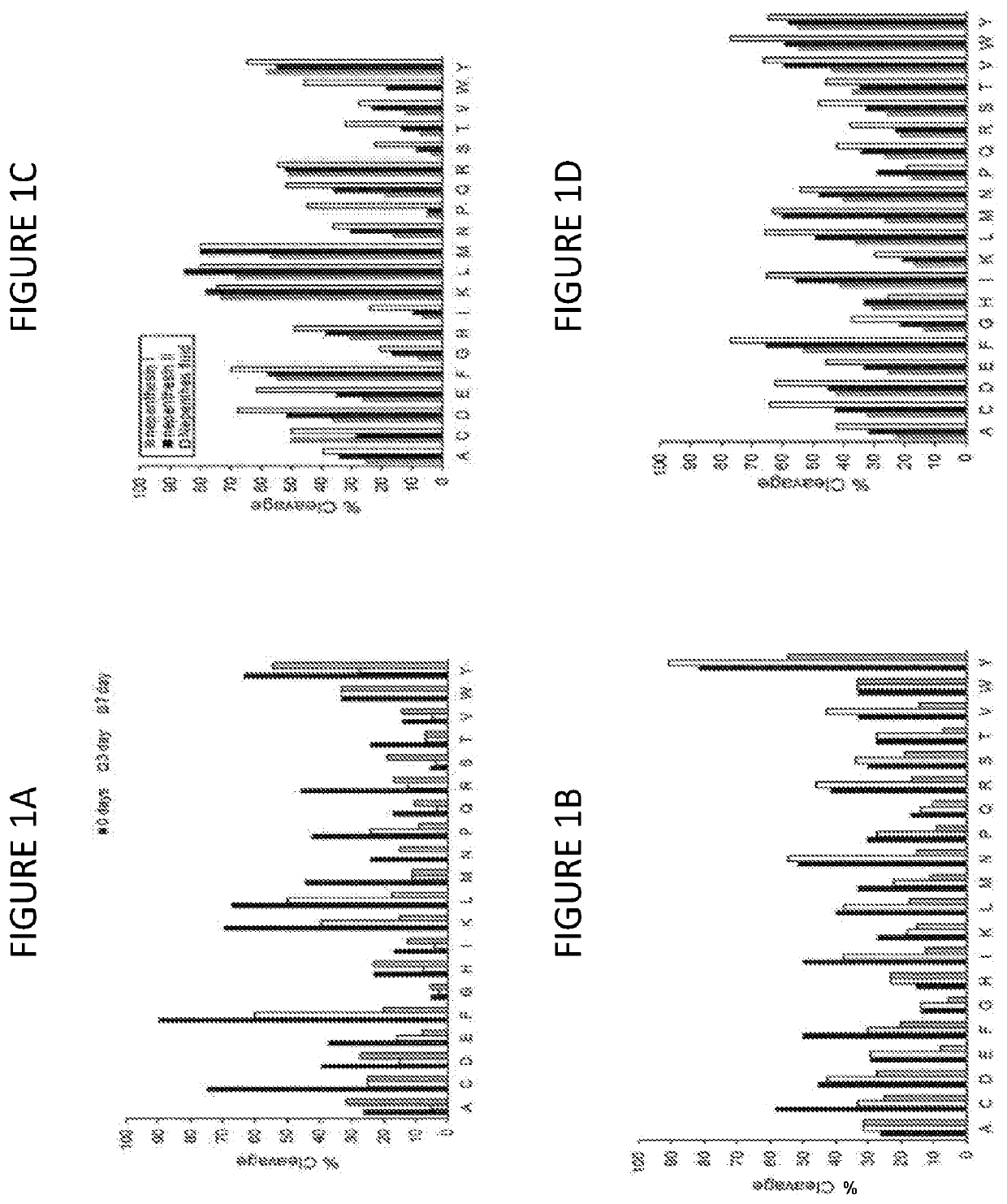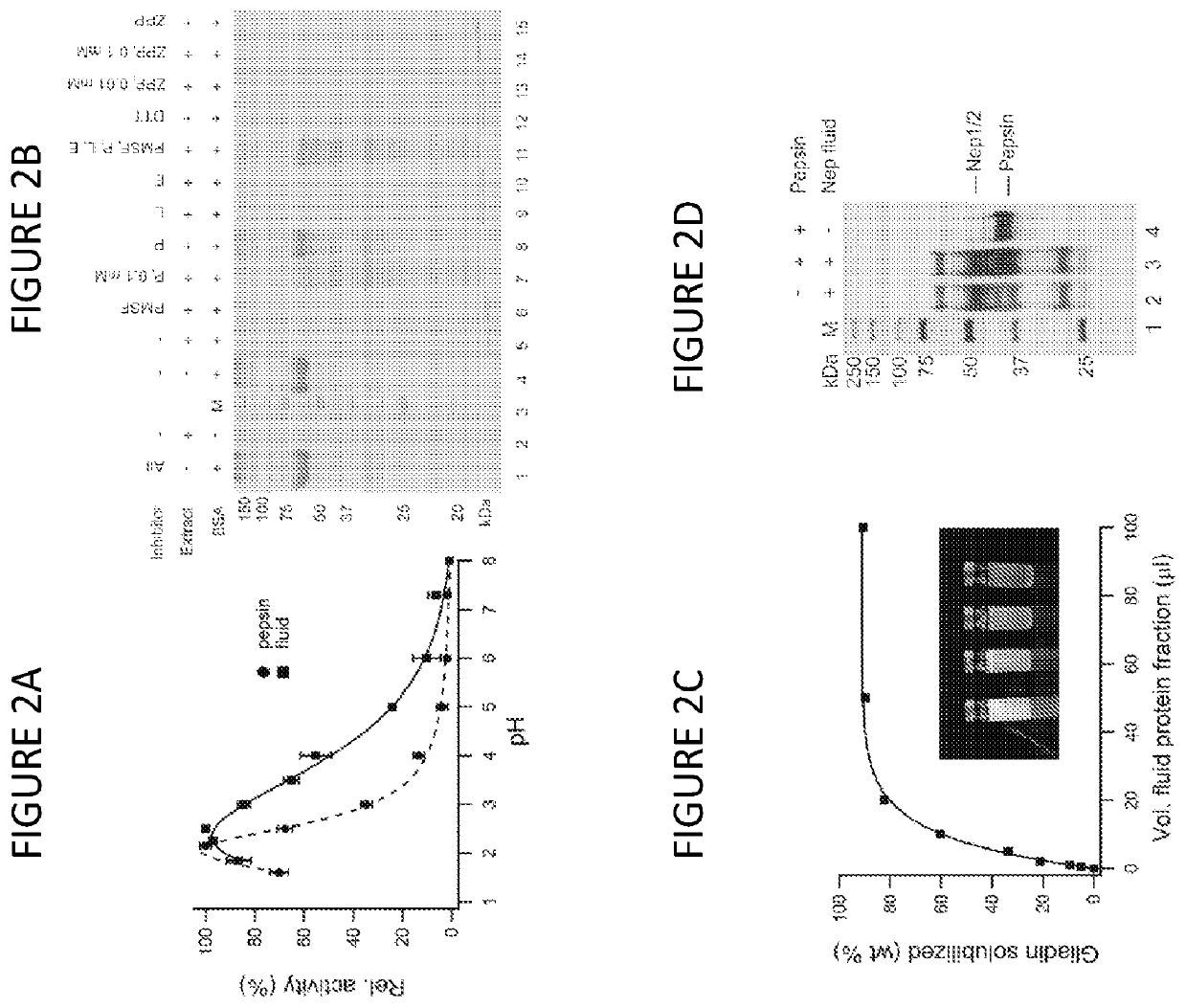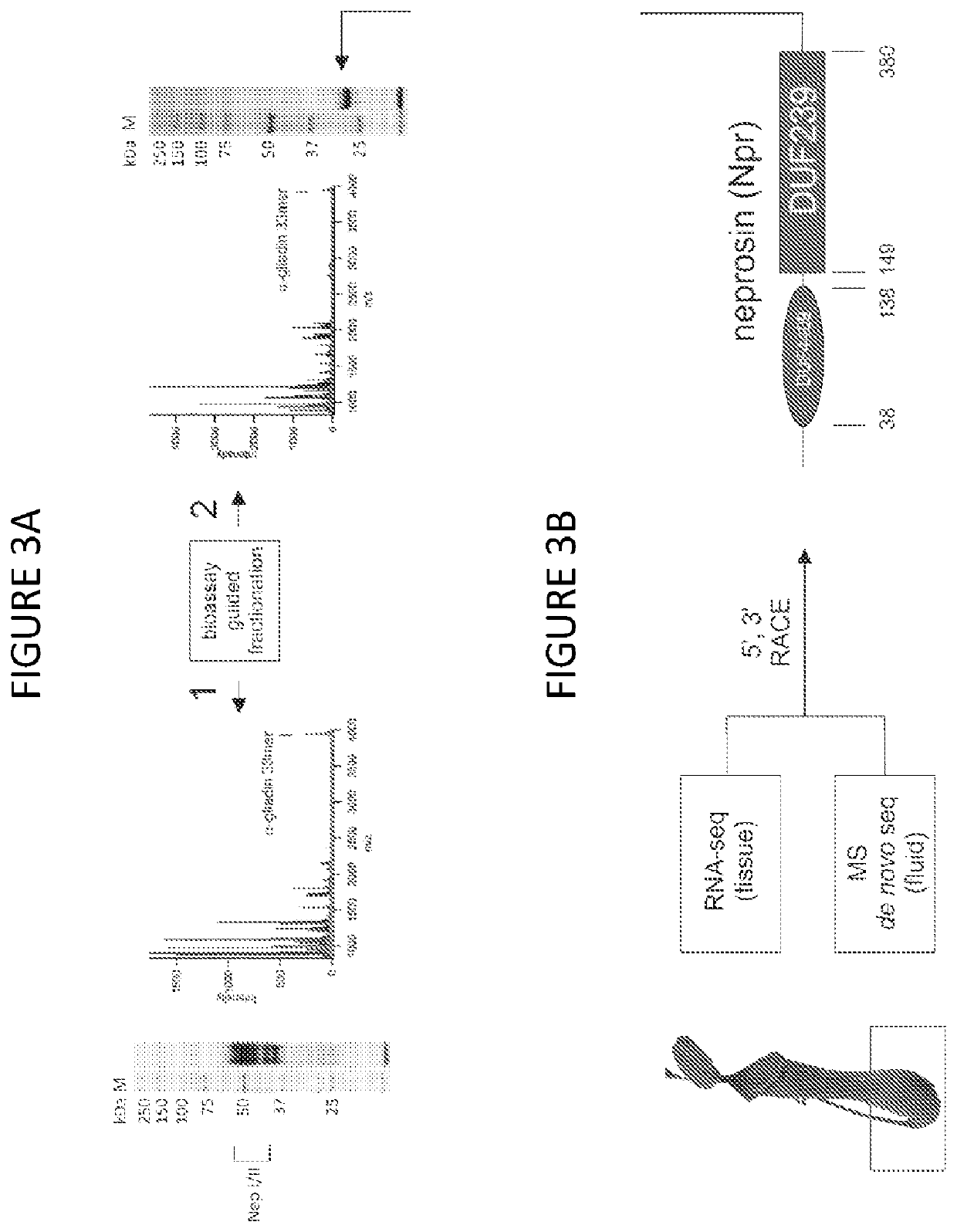Compositions and methods for treating gluten intolerance and disorders arising therefrom
a technology of gluten intolerance and disorders, applied in the field of compositions and methods for the treatment of gluten intolerance and related conditions, to achieve the effects of reducing the antigenicity of proteins, reducing symptoms, and maintaining the safety and tolerability of compositions
- Summary
- Abstract
- Description
- Claims
- Application Information
AI Technical Summary
Benefits of technology
Problems solved by technology
Method used
Image
Examples
example 8
Analysis of Gliadin Digests
[0233]The above results suggest an effective digestion process, but they do not convey information regarding the completeness of the digestion. Using the pepsin-resistant 33mer, the evolution of peptide products was monitored under dilute conditions.
[0234]Supernatant was analyzed by data-dependent LC-MS / MS, in two 1-hour reversed phase gradient runs, configured for top-10 ion selection using CID in a high / low configuration. In one run, ion selection was restricted to 2+ and higher charge states. In the other run, ion selection was applied to 1+ charge states only. Data from both runs were combined and searched against all UniprotKB / Swiss-Prot entries for gliadin and glutenin from Triticum aestivum (25 proteins), using Mascot v2.3, configured for non-specific digestions and filtered for peptide hits with p<0.05. For estimation of peptide size distribution, all LC-MS spectra were combined and deconvoluted in Protein Deconvolution v1.0, with appropriate setti...
example 9
tion of Antigenic Regions
[0239]Whether enhanced digestion profiles would impact deamidation in antigenic regions was investigated. The recognition of immunodominant peptides by T cells is amplified when these peptides are deamidated in their core binding region by tissue transglutaminase 2 (TG2), particularly at position P4 or P6 in HLA DQ2 associated celiac disease. Deamidation is dependent on both peptide sequence and length, and the deamidation levels for key antigenic regions are significantly higher than elsewhere in sequence. Crude gliadin digests were analyzed for the conversion of non-deamidated peptides to deamidated forms, and sorted all the peptides using a previously published algorithm for the identification of DQ2 binding motifs.
[0240]Supernatants from crude gliadin digests were treated with 0.1 mg / mL human transglutaminase-2 (R&D Systems, Cat. 4376-TG-050) in 100 mM Tris-HCl pH 7.5, 2 mM CaCl2 at 37° C. for 90 minutes, and quenched at 95° C. for 15 minutes, following ...
example 11
Nepenthesin on Intestinal Barrier Dysfunction and Gliadin Sensitivity
[0243]The efficacy and tolerability of the fluid protease extract was tested in a transgenic NOD / HLA-DQ8 mouse model that exhibits intestinal barrier dysfunction and gliadin sensitivity in a DQ8-dependent manner.
[0244]NOD DQ8 mice were sensitized with cholera toxin (CT) and pepsin-gliadin (P-G) digest to break oral tolerance to gliadin, and continuously fed with P-G over a three week period as a positive control for intestinal inflammation. (FIG. 13). Negative controls were treated with CT and P-G, but left free of subsequent oral gliadin challenges. Sensitized mice were split into two groups, where one group was challenged with gliadin co-digested with pepsin and fluid proteases, and the other was challenged with gliadin co-digested with pepsin and recombinant nepenthesin H. Eight mice were used in each of the four groups. Mice were evaluated for overall appearance (movement, eye opening, grooming) and body weight...
PUM
| Property | Measurement | Unit |
|---|---|---|
| pH | aaaaa | aaaaa |
| pH | aaaaa | aaaaa |
| pH | aaaaa | aaaaa |
Abstract
Description
Claims
Application Information
 Login to View More
Login to View More - R&D
- Intellectual Property
- Life Sciences
- Materials
- Tech Scout
- Unparalleled Data Quality
- Higher Quality Content
- 60% Fewer Hallucinations
Browse by: Latest US Patents, China's latest patents, Technical Efficacy Thesaurus, Application Domain, Technology Topic, Popular Technical Reports.
© 2025 PatSnap. All rights reserved.Legal|Privacy policy|Modern Slavery Act Transparency Statement|Sitemap|About US| Contact US: help@patsnap.com



